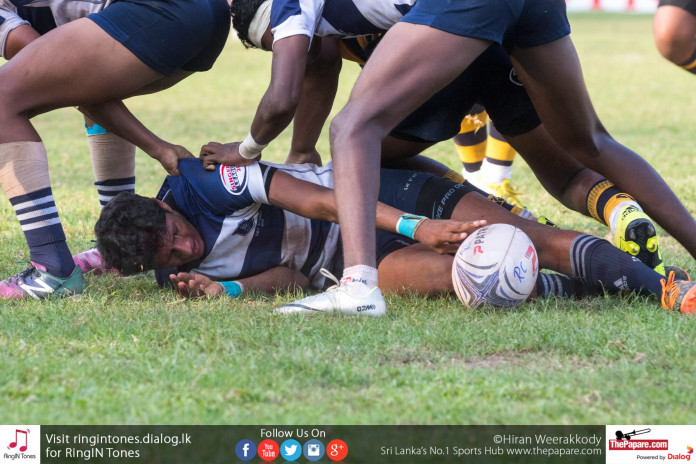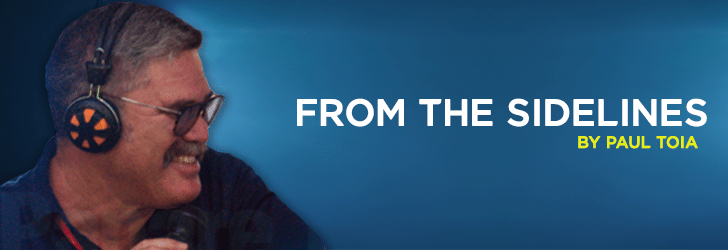I WAS fortunate enough to see some nail biting finishes on the weekend that showed how positive the team spirit is in schoolboy rugby in Sri Lanka. What really caught my eye, however, were the skills on display in the junior matches and specifically at the breakdown.
This week in our focus on the breakdown we concentrate on the first arriving attacking player. Above all else his primary job is to get to the ball carrier and give him support. As he approaches the tackle situation he needs to assess his options and communicate this to the tackled player. What are the threats and where are they coming from? If there are no threats he could ask for the ball to be popped up to him. If the ball is already placed he can play it by passing or running. If he is arriving first before the opposition, but they are close, he could take the space above the ball in a strong stance to protect possession. If our man is arriving second, after the opposition is over the ball, he must make an effective clean out.
In theory this all looks simple but in reality to assess the situation, make and execute the correct decision takes practice, accuracy and courage. Let us look at the technique needed to be effective at the breakdown. Speed to the tackled ball beats all comers. If your lines are direct and you are within two metres of the ball before the opposition you will be effective. Next in importance would be your angle of approach and your body height as you draw closer. Your angle of approach needs to be straight up and down the field with your back to your own try line, through the gate and over the ball. To ensure your body height is low enough I was taught to bend at the knees and touch the ground with my hand when I was a metre from impact. With your knees bent, your back straight and your eyes up looking for threats you will be in good shape for the coming contact. A wide base with your feet will give you stability if you are looking to protect the space. Driving into contact and chasing your feet past the ball will give you an opportunity to clean out any threats.
The art of cleaning out threats takes lots of courage to put your head into areas that are less than inviting but this is what is called for especially if you are not to the breakdown first. Whoever has their shoulders and chest lower generally wins the contact and this is what I saw a lot of at U18 and U16 level. Excellent body shape, a straight back with the head up saw lots of ball retention, and pressure being built, that leads to line breaks because the ball is recycled before the defence can get organised. It was obvious that the juniors I saw on the weekend practiced these skills at training each week, because they have the confidence needed around the tackle ball area.
Accuracy, decision making, communication and courage will be improved in your game too by repeating drills that focus on the breakdown and remember to always KEEP YOUR EYE ON THE BALL.















